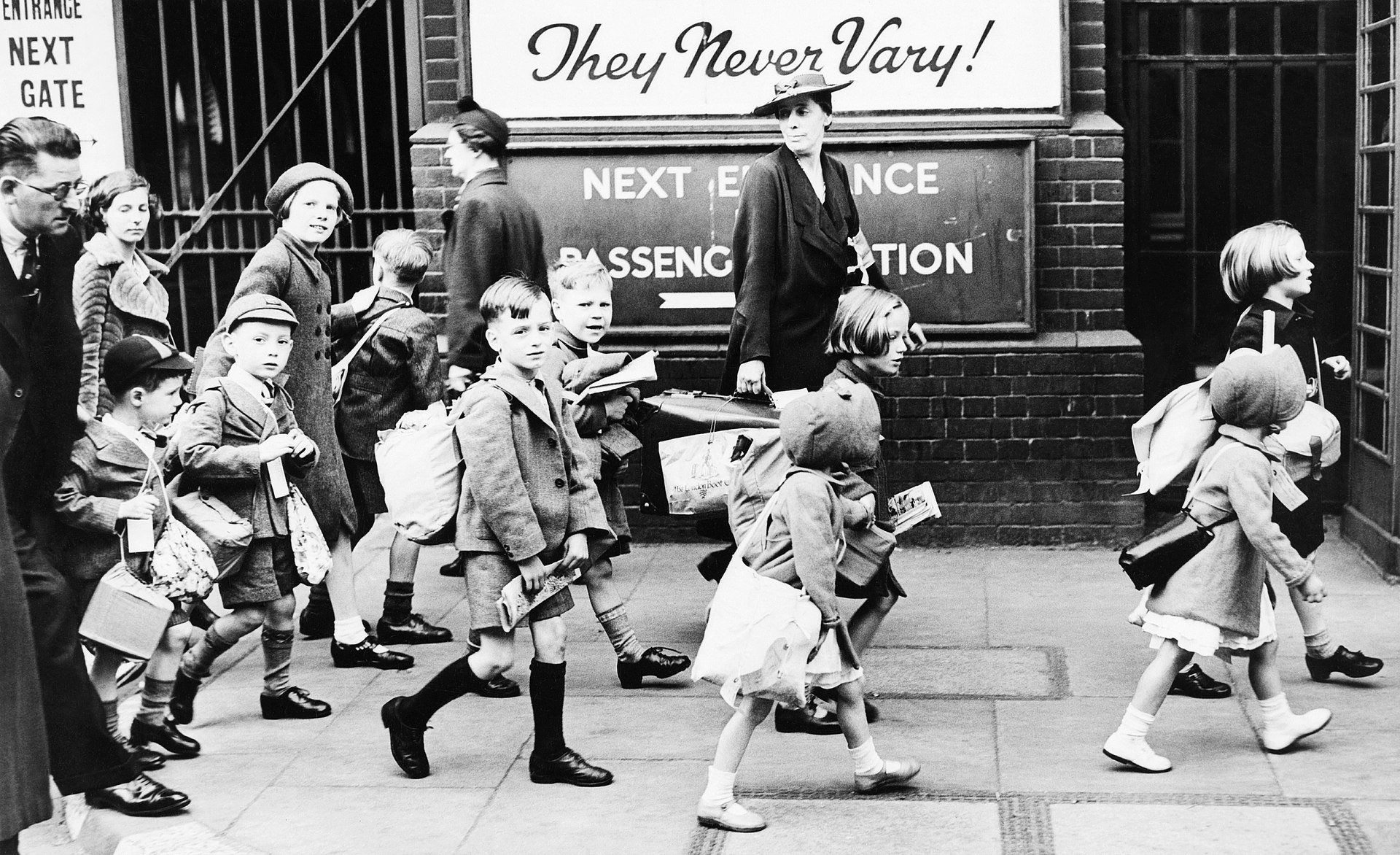Even before the start of the war, the British government had begun drawing up a plan to evacuate children and vulnerable adults
from cities and large urban areas to more rural locations. This scheme was known as Operation Pied Piper and the first evacuations
took place on 1st September 1940. This was the day that Germany invaded Poland and 2 days before the declaration of war. In only
three days, 1.5 million people were evacuated to safer locations within Britain.

Children from London in 1940 about to catch a train in the city to evacuate them to the West Country.
By Press Agency photographer
http://media.iwm.org.uk/iwm/mediaLib//294/media-294126/large.jpg
This photograph HU 36871 comes from the collections of the Imperial War Museums, Public Domain
https://commons.wikimedia.org/w/index.php?curid=25090478
Evacuation was not compulsory. However, many schools in cities and larger towns were closed and this helped persuade families to send their children away. In many cases, whole groups from a single school were relocated together, so although children would be living with families they did not know, they would be in the same place as many of their friends from home.
The Children's Overseas Reception Board approved the evacuation of 24,000 children for evacuation overseas. Between March and September 1940, 1,532 children were evacuated to Canada, 577 to Australia, 353 to South Africa and 202 to New Zealand. However, the scheme was stopped after the SS City of Benares was torpedoed on 17th September 1940 by a German U-boat, killing 77 of the 90 CORB children on board. However, in 1940 and 1941 about 14,000 children were evacuated privately to overseas relatives or foster families, including 6,000 to Canada and 5,000 to the United States.
Joan's evacuation was a private scheme organised by Kodak, whereby children of employees at the company's Harrow works were sent to live with families of employees at the company's head office in Rochester, New York. Joan departed at the end of August 1940, so before the sinking of the City of Benares.
The movement of urban children of all classes to unfamiliar rural locations, without their parents, had a major impact. The Evacuees Reunion Association was formed with the support of the Imperial War Museum. It provides opportunities for former evacuees to contribute and share evacuation experiences and for researchers to request information such as the long-term effects of evacuation upon children.
Souces:
Wikipedia, Imperial War Museum.